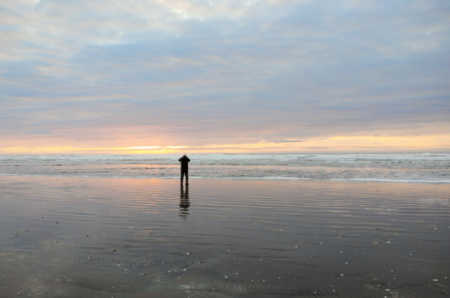Charles Krebs always knew he’d find his way back to the microscopic world. His fascination with the unseen began when he was just a kid. He was given an old microscope to look at pollen for a school project. As Krebs put it, “life got in the way” of pursuing microscopy further, but he never lost his drive to create. After college and a stint in the military, he began what would become a forty-year career in freelance photography. Over the years, his work has been featured in many acclaimed publications like Smithsonian Magazine, Discover, and Food & Wine. Macro-photography, it turned out, would be the thing that led him back to microscopy.
Masters of MicroscopyMasters of Microscopy

Charles Krebs On Seeing Beauty in the Ordinary
Welcome to Masters of Microscopy: The People Behind the Lens, where we showcase and celebrate the individuals who are the heart of the Nikon Small World competitions. They are scientists, artists, researchers, educators and everyday curious individuals who uncover the fascinating microscopic world around us.

Charles Krebs
“I love photographing nature of all kinds, but the world didn’t really need another elk picture,” Krebs said. As digital photography and the associated technology progressed, Krebs found himself being drawn back into the microscopic world.
“Digital technology really changed the game for me,” Krebs said, “It allowed me to reexamine microscopy. My photography is more reality-based, and I’ve always been drawn to subjects that are more recognizable for the common person, like pollen or pond critters versus a single cell.”
He continued, “before digital, I couldn’t take the types of photos I wanted to of those subjects because with any type of film at any high magnitude, your depth of field is incredibly shallow. Digital changed all that. I picked up the microscope and started using digital techniques like image-stacking to make the kind of pictures that I wanted.”

Krebs enjoying time on the beach, capturing photographs
Krebs’s sharp eye for microscopy, top-notch talent for finding beauty in a variety of unexpected places and early adoption of the image-stacking technique has led him to become one of Nikon Small World’s top competitors. Since he first began entering in 2004, Krebs has placed within the top twenty fifteen times (including a first-place win in 2005, only his second year entering), received nine honorable mentions, and earned seven images of distinction for a total of thirty three recognized images over the course of the last fifteen years.
Krebs’ 2005 winning image of a house fly was particularly impressive the year it won, as image stacking was a fairly new technique on the imaging scene that few had truly mastered. The 2005 judging panel had never seen anything like it. Since then, image stacking, a technique that uses digital image processing to combine sometimes hundreds of images to create one final piece with a specific depth of field, has become a favorite of contestants.

Krebs and his microscope
For Krebs, showing the public the beauty of the unseen world is one of his favorite things about microscopy, and why competitions like Nikon Small World are so important.
“One of my goals is to take images of things that people will have some familiarity with, and I like to show them the details. I like to show people interesting aspects of a subject that they never see. I'm most interested in images that show people how some day-to-day things that are incredibly beautiful, incredibly interesting and have incredible stories behind them if you look at them close enough,” Krebs shared.
Now semi-retired from his freelance career, Krebs couldn’t stay away from creative pursuits for long. What started with helping a professional contact who’d seen his Nikon Small World Imagery learn some microscopy techniques has turned into consistent project work with venture capital firm Intellectual Ventures and its branch off venture, Modernist Cuisine.

Two of Krebs’ winning images: rotifers (left) and a jewel beetle (right)
“Some people retire and play golf. I don't know how a freelance photographer actually retires.” Krebs said, “I tend to feel dissatisfied if a day or two goes by without capturing an image I think is really cool. I think I’ll always feel a need to create new things.”
To aspiring micro-photographers, Krebs says, “to be great at what you do takes a true blending of art and science. You need to be familiar with the characteristics of digital imaging, but you also need to be intimately familiar with the characteristics of microscope optics and how to use it properly.”
You can see the full gallery of Krebs’s Nikon Small World winning images here or view his other works at www.krebsmicro.com.
To stay up to date with the "Masters of Microscopy" series and receive your daily dose of Nikon Small World, follow us on Instagram, Twitter, and Facebook. Be sure to follow Nikon Instruments for the latest updates on equipment and technology.